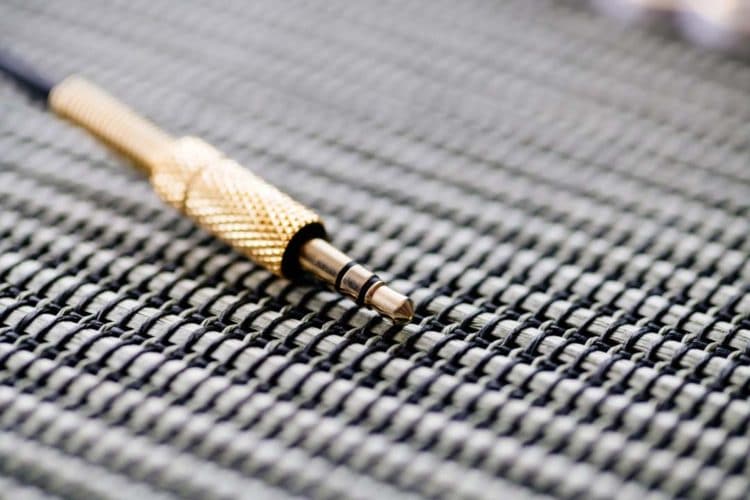I’m constantly plugging and unplugging my headphones from one device to the next. Sometimes I do it while multitasking, and I end up sticking it in the back of my phone cover or in the wrong plug on my computer. It happens more often than I’d like to admit.
That’s why I was a bit concerned when I started hearing a funny noise through my headphones.
Could I be wearing out my headphone jack? I checked the jack, and there were a few scratches. Turns out that damage to your cable and headphone jack aren’t all that uncommon.
Your headphone jack is covered with a thin layer of conductive metal, which can wear out over time. If you accidentally scratch your jack, it can get damaged. To test if this is the case, turn the jack while it’s plugged in. If the sound quality gets better (or worse), your jack could be faulty.
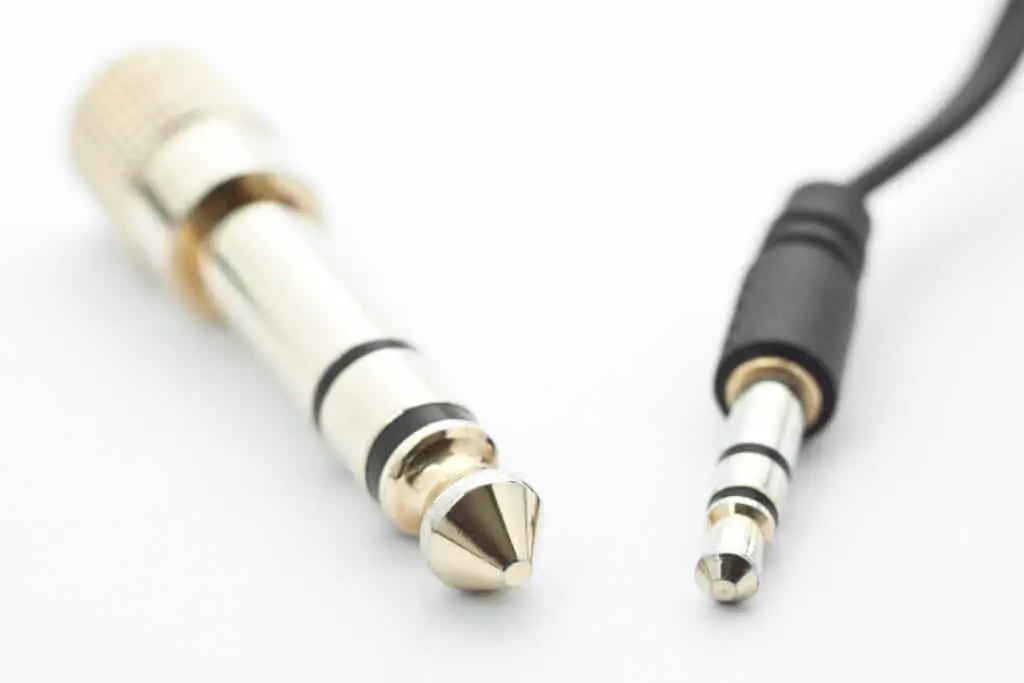
How Long Will a Headphone Jack Last?
Even if you take perfect care not to scratch or damage your headphones, any piece of hardware comes with a limited usage.
We all know our rechargeable batteries only recharge so many times, and the same is true for your headphone jack – just in the number of plug/unplug cycles.
A standard 3.5mm headphone jack will last for up to 5000 plug/unplug cycles. The Micro USB and Type-C connectors can reach up to 10,000 cycles. Apple’s lightning connector doesn’t state how many cycles it can handle, but many users have complained that it doesn’t hit the mark.
To put that into perspective (before you get worried) if you plug your headphones in once a day and they last 5000 cycles, then you’re looking at a lifespan of around 13 years, give or take.
Double that if you’ve got a Micro USB or Type-C, half it if you’ve got a lightning connector (just to be on the conservative side).
The good news then is that you’ll probably move on to newer technology before your jack wears down naturally.
Bad news is that you could damage it before then. These “cycles” are tested under perfect circumstances, not in the way we end up using it.
Movement, while your jack is plugged in, causes friction, which can wear it down, throwing your headphone cable in your backpack, can cause damage, and the list goes on.
It all comes down to corrosion. The shiny bits of metal you see on the jack can be made of a few things. The higher quality headphones will use brass plated with nickel-chromium – these will probably last forever as they are super durable and corrosion-resistant.
Unfortunately, this adds to the price tag, and to keep things affordable, many manufacturers have opted to use alternative metals.
They still work and last long enough, don’t get me wrong, they do the job. Most standard headphone jacks will have brass or stainless steel that can be plated with nickel or tin.
Some manufacturers will use a silver or gold coating, and while this might sound fancy, don’t be fooled.
Silver corrodes easily, and gold is way too soft to handle day to day use. They both wear down in no time – more on this in a bit.
Finally, your jack’s surface will also corrode due to poor storage. If you have a habit of throwing your headphones in your open backpack no matter what else has been inside it, you’re bound to scratch something at some stage.
Best is to keep your headphones (and cable) in a separate case for storage.
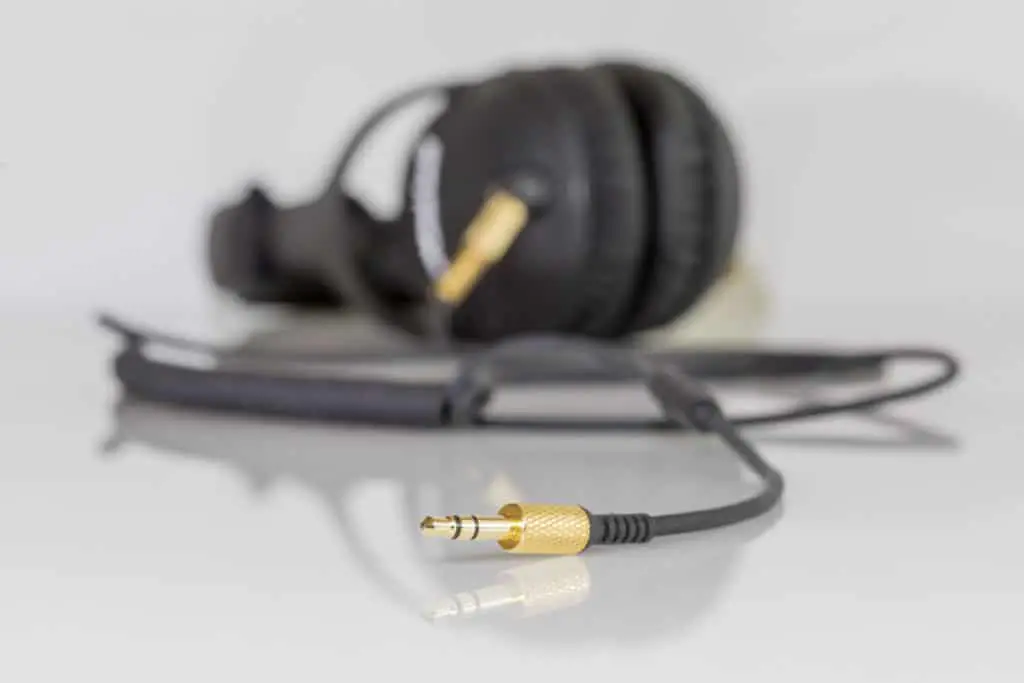
Can Gold-Plated Headphone Jacks Wear Out?
Why are earphone/headphone jacks gold plated in the first place? And, can my gold-plated headphone jack wear out? So firstly, gold is great in some ways – it won’t easily oxidize, which is very common in silver or tin platings. Great pro, but what’s the con?
Gold is expensive to use as a plating material for headphone jacks. Thus a very thin coating is used. As pure gold is a soft metal, it can wear out fast with repeated use. Some quality brands will use a thicker layer which will resist oxidation and won’t wear down as easily.
Not sure why oxidation is even a concern?
Well, it could be important to you if you live in an area with warm, humid weather. Oxidation is a chemical reaction that some metals are prone to. They can start to rust or tarnish. Oxidized metals aren’t conductive, meaning your jack won’t be able to send electrical signals on the oxidized bits.
Manufacturers overcome this issue by using metals that won’t oxidize. Something to consider if you live in an area where things easily rust or if you use your headphones at the beach often.
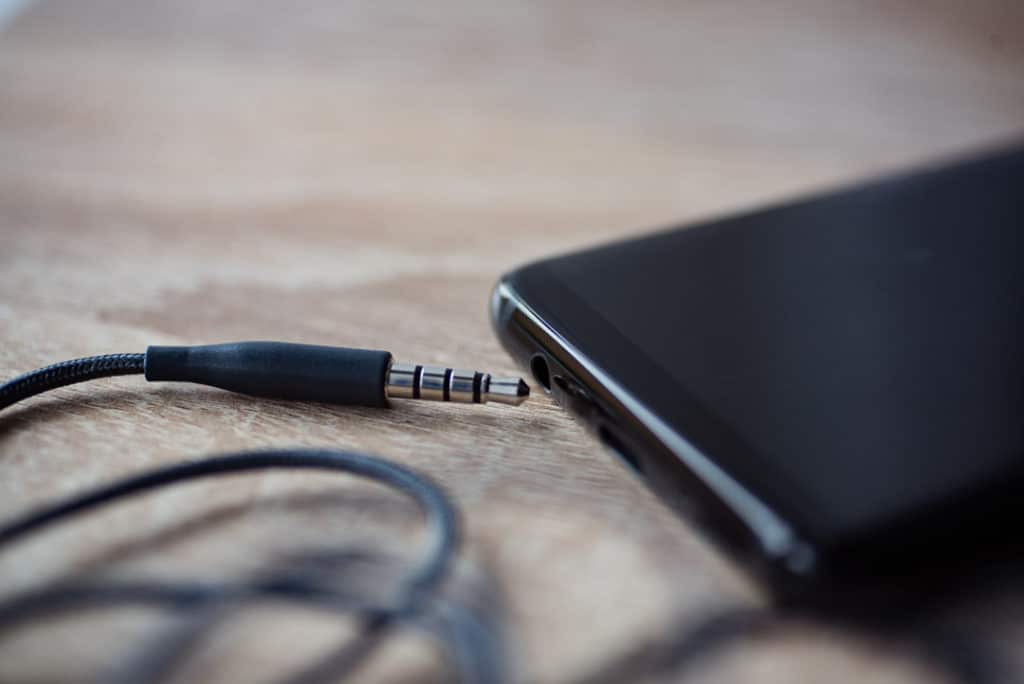
Why Your Headphone Jack Doesn’t Snap into Position
Another common issue you might have experienced yourself is that the jack just doesn’t want to snap into position. If your jack doesn’t go all the way in, there might be a few things you can do to fix it.
Physical barriers like dust or pocket fluff can be preventing your jack from snapping into position. Do NOT use a metal object to scratch it out; you’ll damage the port. Compressed air is your safest bet. Once you get the debris out, your headphone jack will snap back into place.
If you’re trying to plug your headphone jack into a new socket, it could also be that the socket is too small. Don’t force it, as this could scratch and damage the surface metals of your jack.
I did this on an airplane once, just to see if I could possibly get my own headphones to pick up sound (don’t try this – it won’t), and the hole was way too small anyway.
At this stage, you might be wondering, why and how does my headphone jack “snap into position”. Your jack needs to “connect” firmly to the metals in the jack port.
To do this, the manufacturers have flexible connectors in the jack port that cause the “snap” action when you insert the jack and keep it there.
If you are too rough, they will lose their flexibility faster than intended and your headphone jack will keep falling out no matter what you do.
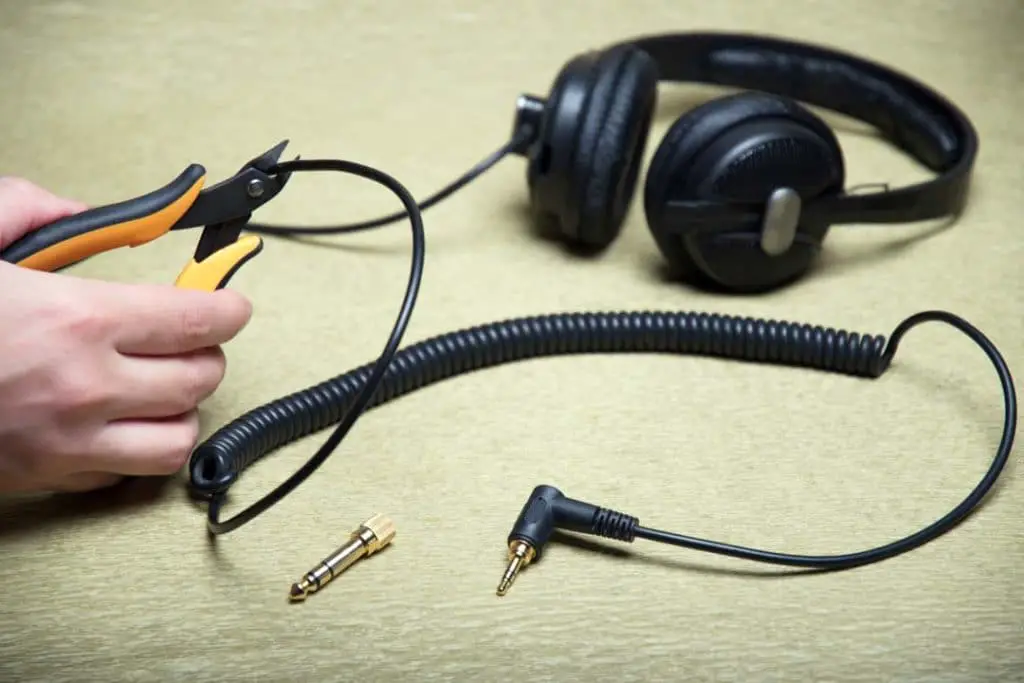
How to Fix a Worn-Out Headphone Jack?
If you believe your headphone jack is a bit worn down, don’t worry, you’re not alone. This is a very common issue, and most manufacturers have spare parts for both the jack plug and port. To replace the jack plug, the following steps will be useful:
- Purchase the replacement parts online. You can also send your device in for repair if it’s still under warranty.
- Use a wire cutter to remove the faulty plug with about a 1cm of cord (usually, this is also a bit damaged).
- Pull back around 1cm of the insulation on the remaining wire.
- Open up your new jack and solder the wires to their corresponding leads.
You’ll need to be a bit technically savvy to replace the jack plug, but overall it’s not the hardest thing to do. Most 3.5mm headphone jacks have 3 connectors (the ‘TRS’ model) and thus three wires.
If your headphones have a microphone, there will be a fourth wire. Two of the four wires will be the same color and should be soldered to the center lead.
The other two wires get soldered to the side leads, and you’ll have to check the connection to the original jack to know which goes where.
If you can’t or forget, you might get the stereo reversed, in which case you’ll need to remove the side wires, swap them and solder them back on.
If your headphone jack port is worn down, replacing the port is a bit more of a challenge.
First, make sure your device isn’t under warranty. Why? Well, for one, you can send it in for repairs if it is.
Secondly, if you do tamper with it while it’s under warranty, you might lose your warranty.
If it isn’t under warranty anymore, replacing it will depend on where the port is located. There are four basic steps to replace the jack port:
- Disassembly – open up your device to give you access to the port
- Order a new part
- Remove the old jack port and replace it with the new part. It should click back in.
- Close it all up. At this stage, taking photos during dis-assembly will help you close things up with everything in the right place.
This isn’t easy, especially if the port is on your computer or phone, and some professional help will go a long way.
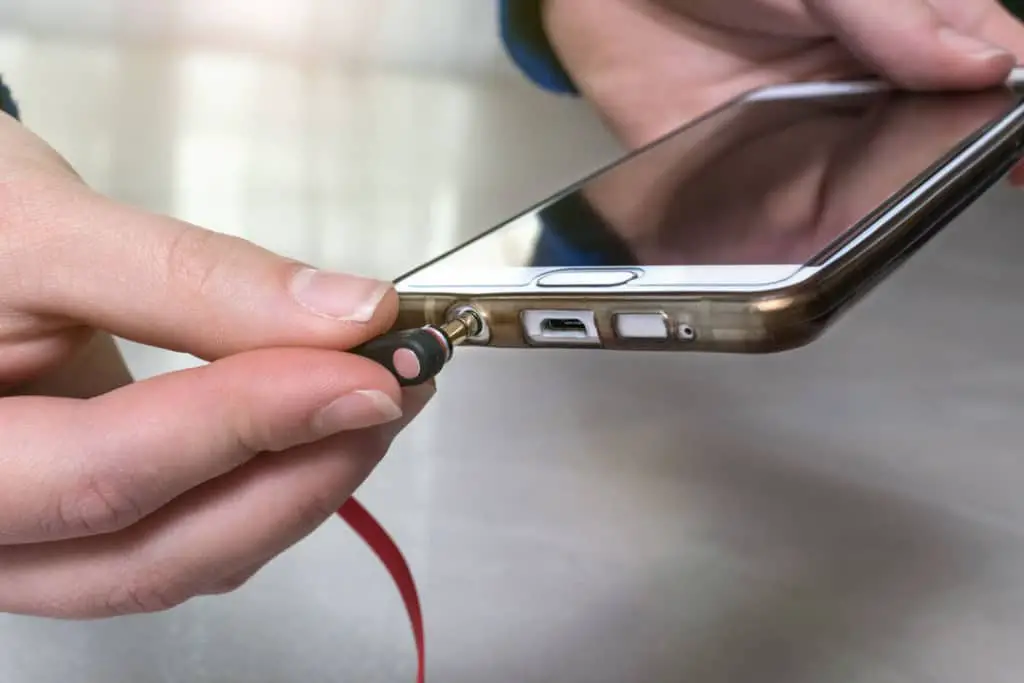
Will Plugging and Unplugging Headphones Often Damage the Port?
If you’re anything like me, I don’t take it easy on my headphones, and they’re constantly going from my computer to my phone to my Playstation and back again. Plugged into and unplugged from the ports multiple times a day. I know this isn’t great for the jack, but the thought has crossed my mind whether I’m damaging the ports too.
The jack port is designed to handle plugging and unplugging an audio jack. However, frequent use, especially without care, can damage the internal contact point and grips. To avoid this, make sure you always plug and unplug the jack gently and avoid unnecessary switching of devices.
To help you remember to work gently with the jack, always take the plug at the base when removing or plugging it in. Pulling at the cable can really damage the internal and external parts.
In addition, don’t let your headphone jack rest against anything when it’s plugged in.
Lightning users (Apple) are the worst culprits because the jack is at the bottom. This leads to people resting the phone on the jack when talking on the phone or watching a video.
There are really affordable adapters online that will angle the port, and some even let you charge and use audio because there are two ports.
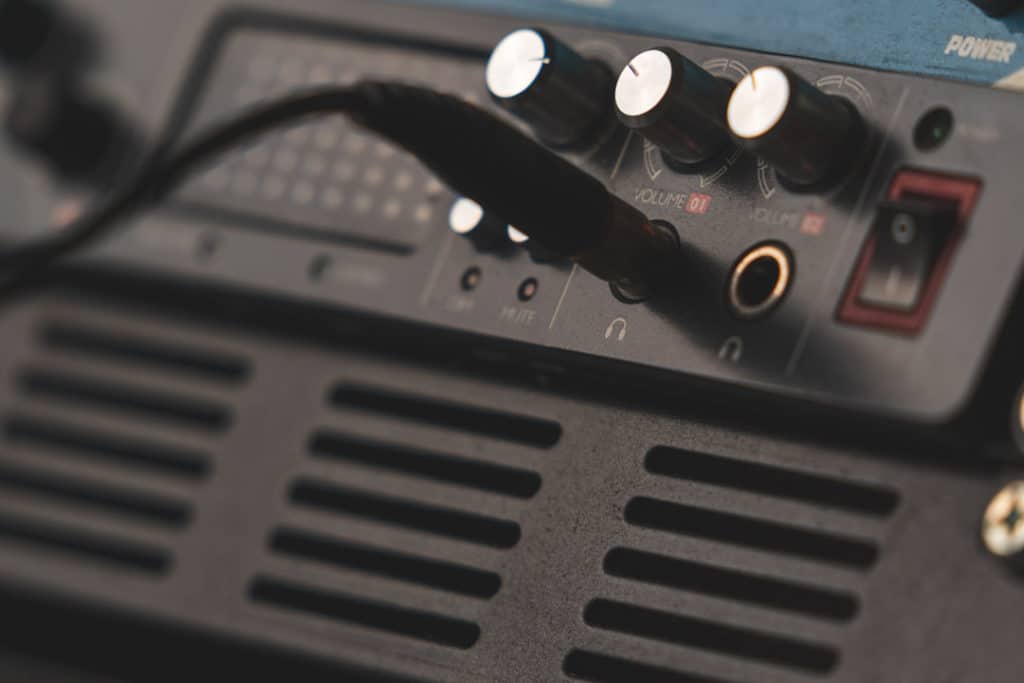
Can I Leave My Headphone Plugged in Forever?
Perhaps you’re like a few of my friends who have multiple headphones to cover every possible use and device. The gamer headphones, the cell phone headphones, the exercise headphones… and some of these stay plugged in basically forever. Could that cause any issues?
Keeping your jack plugged in won’t cause any issues, especially if it’s a sedentary device, like a desktop computer. If, however, it’s a portable device, make sure you aren’t putting stress on the connector when not in use. If you are, rather unplug it gently.
Headphone jacks are, in fact, designed to stay connected. While they can be unplugged, it wasn’t necessarily the original intent.
Luckily, the peripherals and ports are now being designed with some flexibility, and you can expect a long lifespan even with constant unplugging and plugging.
If you are using a headset for your gaming and you can leave it plugged in, don’t feel like you’re being lazy to do so. You’re actually doing your headphones a favor.
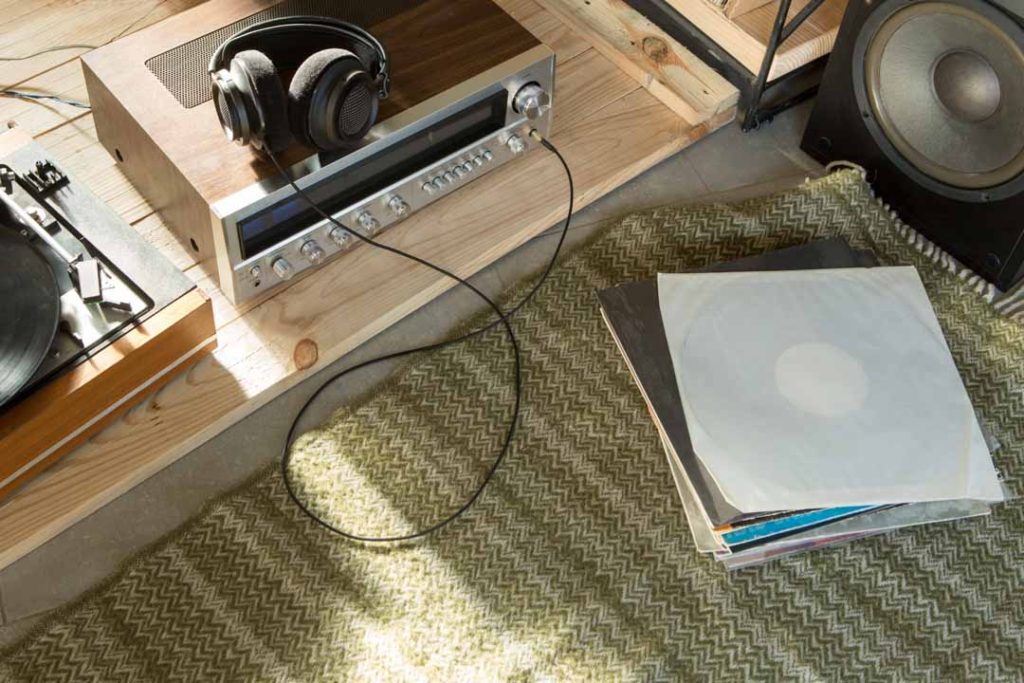
Can You Unplug Your Headphones before Turning off Your Amp?
There is one area where leaving your headphones plugged in could be a bit dangerous. We all love our amps, but can leaving your headphones plugged in or plugging them out prematurely actually damage your headphones?
As a rule, do NOT unplug your headphone jack while your amp is still on. The risk is that it can damage your output transistors. The best is to 1) mute the sound, 2) turn off the audio source, 3) volume down the amp before switching it off completely, and 4) ONLY THEN to unplug your headphones.
Some higher quality amps have a safety relay, which protects your headphones. Just be aware that the safety relay is what keeps you protected, not a muting relay.
If you’re unsure whether or not you need to take precautions when turning off your amp, it’s best to visit the manufacturer’s website. Some manufacturers will have very specific instructions, and it’s worth taking notice of these.
I know I once owned a pair where it was advised to have my headphones plugged in before switching on and while powering down. This had to do with the resistive load. Needless to say, just make sure you’re doing the right thing.
What’s the danger? Well, worst-case scenario is that your amp could have a DC offset, which can damage your drivers. This has happened to quite a few amp/headphone owners, so take the warning seriously.
To make sure you always get it right try my method:
- Visit the manufacturer’s site to get the exact amp/ headphone usage instructions
- Create a habit of switching on and switching off in the recommended manner.
- If you have multiple headphones, take a second before use just to mentally check that you’re using the right procedure, so you don’t mix them up.
To Summarize
It’s very possible that your headphones can wear out. If you have poor quality sound or see any physical damage to your jack, it might be time for a service. The headphone jack is covered with a conductive metal, and the biggest issue is physical damage, corrosion, and oxidation.

